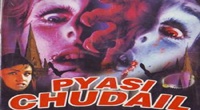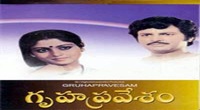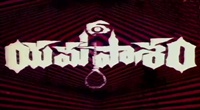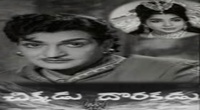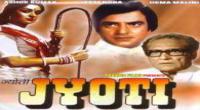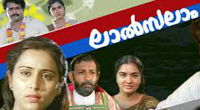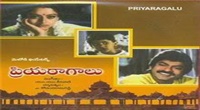
Nath, also called as Natha, are a Shaivism sub-tradition within Hinduism. A medieval era movement, it combined ideas from Buddhism, Shaivism and Yoga traditions in India. The Naths have been a confederation of devotees who consider Adinatha, or Shiva, as their first lord or guru, with varying lists of additional lords. Of these, the 9th or 10th century Matsyendranath and the ideas and organization developed by Gorakshanath are particularly important. Nath tradition has extensive Shaivism-related theological literature of its own, most of which is traceable to the 11th century CE or later.
Their unconventional ways challenged all orthodox premises, exploring dark and shunned practices of society as a means to understanding theology and gaining inner powers. They formed monastic organisations, itinerant groups that walked great distances to sacred sites and festivals such as the Kumbh Mela as a part of their spiritual practice. The Nath also have a large settled householder tradition in parallel to its monastic groups. Some of them metamorphosed into warrior ascetics to resist persecution during the Islamic rule of the Indian subcontinent.
The Nath tradition was influenced by other Indian traditions such as Advaita Vedanta monism, and in turn influenced it as well as movements within Vaishnavism, Shaktism and Bhakti movement saints such as Kabir and Namdev.
Contents
Etymology and nomenclature
The Sanskrit word n?tha ??? literally means "lord, protector". The related Sanskrit term Adi Natha means first or original Lord, and is a synonym for Shiva, the founder of the N?thas. Initiation into the N?tha sampradaya includes receiving a name ending in -nath.
The term ‘’Nath’’ is a neologism for the Shaivism tradition now known by that name. Before the 18th century they were called Jogi or Yogi. However, during the colonial rule, the term "Yogi/Jogi" was used with derision and classified by British India census as a “low status caste". In the 20th century, the community began to use the alternate term Nath instead in their public relations, while continuing to use their historical term of “yogi or jogi” to refer to each other within the community. The term Nath or Natha, with the meaning of lord, is a term also found in Vaishnavism (e.g. Gopinath, Jagannath) and in Jainism (Adinatha, Parsvanatha).
The term yogi or jogi is not limited to Natha subtradition, and has been widely used in Indian culture for anyone who is routinely devoted to yoga. Some memoirs by travelers such as those by the Italian traveler Varthema refer to the Nath Yogi people they met, phonetically as Ioghes.
History
Nath are a sub-tradition within Shaivism, who trace their lineage to nine Nath gurus, starting with Shiva as the first, or ‘’Adinatha’’. The list of the remaining eight is somewhat inconsistent between the regions Nath sampradaya is found, but typically consists of c. 9th century Matsyendranatha and c. 12th century Gorakhshanatha along with six more. The other six vary between Buddhist texts such as Abhyadattasri, and Hindu texts such as Varnaratnakara and Hathapradipika. The most common remaining Nath gurus include Caurangi (Sarangadhara, Puran Bhagat), Jalandhara (Balnath, Hadipa), Carpatha, Kanhapa, Nagarjuna and Bhartrihari.
The Nath tradition was not a new movement, but one evolutionary phase of a very old Siddha tradition of India. The Siddha tradition explored Yoga, with the premise that human existence is a psycho-chemical process that can be perfected by a right combination of psychological, alchemy and physical techniques, thereby empowering one to a state of highest spirituality, living in prime condition ad libitum, and dying when one so desires into a calm, blissful transcendental state. The term siddha means "perfect", and this premise was not limited to Siddha tradition but was shared by others such as the Rasayana school of Ayurveda.
Deccan roots
According to Mallinson, "the majority of the early textual and epigraphic references to Matsyendra and Goraksa are from the Deccan region and elsewhere in peninsular India; the others are from eastern India". The oldest iconography of Nath-like yogis is found in the Konkan region (near the coast of Maharashtra, Goa, Karnataka). The Vijayanagara Empire artworks include them, as do texts from a region now known as Maharashtra, northern Karnataka and Kerala. The Chinese traveller, named Ma Huan, visited a part of the western coast of India, wrote a memoir, and he mentions the Nath Yogis. The oldest texts of the Nath tradition that describe pilgrimage sites include predominantly sites in the Deccan region and the eastern states of India, with hardly any mention of north, northwest or south India.
Gorakhshanatha is traditionally credited with founding the tradition of renunciate ascetics, but the earliest textual references about the Nath ascetic order as an organized entity (sampradaya), that have survived into the modern era, are from the 17th century. Before the 17th century, while a mention of the Nath sampradaya as a monastic institution is missing, extensive isolated mentions about the Nath Shaiva people are found in inscriptions, texts and temple iconography from earlier centuries.
In the Deccan region, only since the 18th century according to Mallison, Dattatreya has been traditionally included as a Nath guru as a part of Vishnu-Shiva syncretism. According to others, Dattatreya has been the revered as the Adi-Guru (First Teacher) of the Adinath Sampradaya of the Nathas, the first "Lord of Yoga" with mastery of Tantra (techniques).
The number of Nath gurus also varies between texts, ranging from 4, 9, 18, 25 and so on. The earliest known text that mentions nine Nath gurus is the 15th century Telugu text Navanatha Charitra. Individually, the names of Nath Gurus appear in much older texts. For example, Matsyendranatha is mentioned as a siddha in section 29.32 of the 10th century text Tantraloka of the Advaita and Shaivism scholar Abhinavagupta.
The mention of Nath gurus as siddhas in Buddhist texts found in Tibet and the Himalayan regions led early scholars to propose that Naths may have Buddhist origins, but the Nath doctrines and theology is unlike mainstream Buddhism. In the Tibetan tradition, Matsyendranath of Hinduism is identified with "Lui-pa", one referred to as the first of "Buddhist Siddhacharyas". In Nepal, he is a form of Buddhist Avalokiteshvara.
According to Deshpande, the Natha Sampradaya (Devanagari:??? ????????), is a development of the earlier Siddha or Avadhuta Sampradaya, an ancient lineage of spiritual masters. They may be linked to Kapalikas or Kalamukhas given they share their unorthodox lifestyle, though neither the doctrines nor the evidence that links them has been uncovered. The Nath Yogis were admired by Bhakti movement saint Kabir.
Practices
The Nath tradition has two branches, one consisting of sadhus (celibate monks) and other married householder laypeople. The householders are significantly more in number than monks and have the characteristics of an endogamous caste. Both Nath sadhus and householders are found in Nepal and India, but more so in regions such as West Bengal, Nepal, Uttarakhand, Uttar Pradesh, Rajasthan and Karnataka. The ascetics created an oversight organization called the Barah Panthi Yogi Mahasabha in 1906, which is based out of the Hindu sacred town of Haridwar. According to an estimate by Bouillier in 2008, there are about 10,000 ascetics (predominantly males) in the Nath ascetic order, distributed in about 500 monasteries across India but mostly in northern and western regions of India, along with a much larger householder Nath tradition. The oldest known monastery of the Naths that continues to be in use, is near Mangalore, in Karnataka. This monastery (Kadri matha) houses Shaiva iconography as well as three Buddhist bronzes from the 10th century.
A notable feature of the monks is that most of them are itinerant, moving from one monastery or location to another, never staying in the same place for long.[26] Many form a floating group of wanderers, where they participate in festivals together, share work and thus form a collective identity. They gather in certain places cyclically, particularly on festivals such as Navratri, Maha Shivaratri and Kumbh Mela. Many walk very long distances over a period of months from one sacred location to another, across India, in their spiritual pursuits.[26]
The Nath monks wear loin cloths and dhotis, little else. Typically they also cover themselves with ashes, tie up their hair in dreadlocks, and when they stop walking, they keep a sacred fire called dhuni.[33] These ritual dressing, covering body with ash, and the body art are, however, uncommon with the householders. Both the Nath monks and householders wear a woolen thread around their necks with a small horn, rudraksha bead and a ring attached to the thread. This is called Singnad Janeu.[33] The small horn is important to their religious practice, is blown during certain festivals, rituals and before they eat. Many Nath monks and a few householders also wear notable earrings.[33]
According to James Mallinson, the ritual covering of ash, necklace and tripundra tilaka was likely missing in the past, and it may have emerged in the modern era.[18] Those Nath ascetics who do tantra, include smoking bhang (cannabis) as a part of their practice.[33] The tradition is traditionally known for hatha yoga and tantra, but in contemporary times, the assiduous practice of hatha yoga and tantra is uncommon among the Naths. In some monasteries, the ritual worship is to goddesses and to their gurus such as Adinatha (Shiva), Matsyendranatha and Gorakhshanatha, particularly through bhajan and kirtans. They greet each other with ades (pronounced: "aadees").[35]
Warrior ascetics
The Yogis and Shaiva sampradayas such as Nath metamorphosed into a warrior ascetic group in the late medieval era, with one group calling itself sastra-dharis (keepers of scriptures) and the other astra-dharis (keepers of weapons).[8] The latter group grew and became particularly prominent during the Islamic invasions and Hindu-Muslim wars in South Asia, from about the 14th to 18th century. According to Romila Thapar, along with Shakta Hindus, subtraditions within the "Natha Jogis were known to take to arms".[7]
Gurus, siddhas, naths
The Nath tradition revere nine, twelve or more Nath gurus.[22][6] For example, nine naths are revered in the Navnath Sampradaya.[36] The most revered teachers across its various subtraditions are:[37][38]

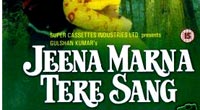
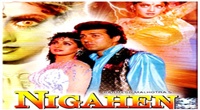

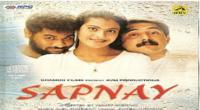

.jpg)
